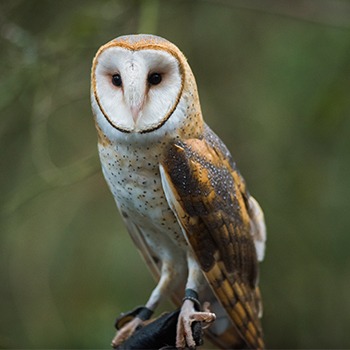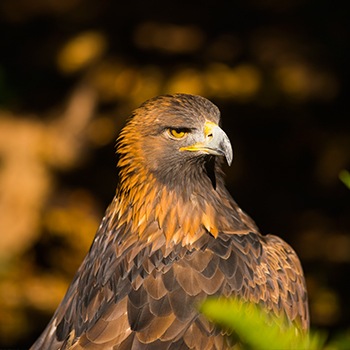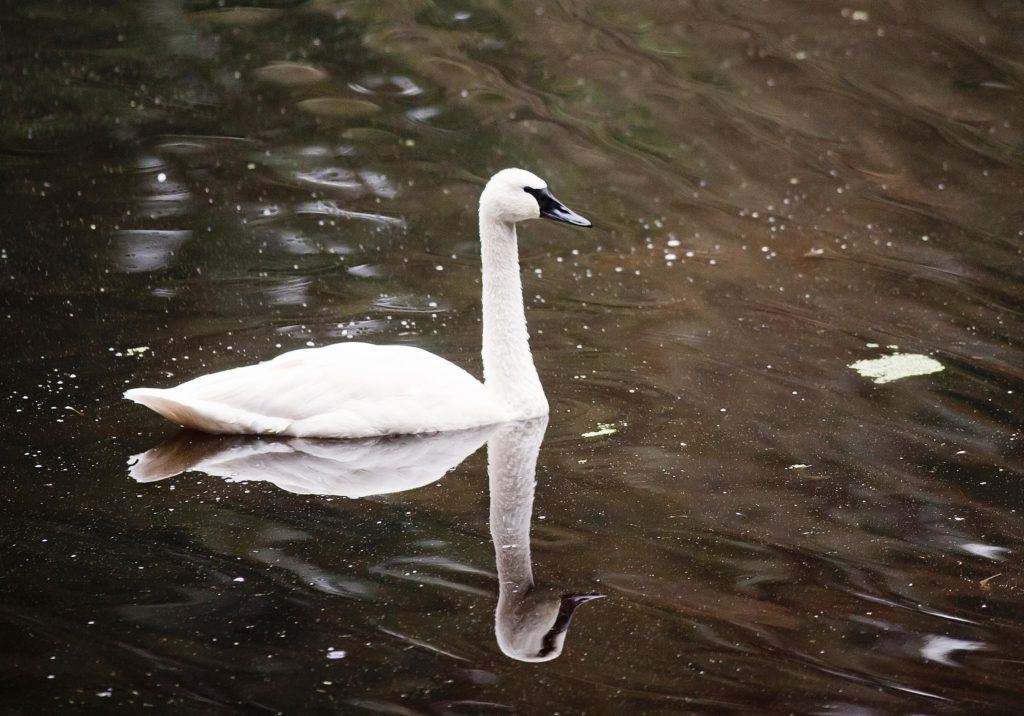Birds
The fierce stare of an eagle. The snowy white wings of an owl.
Come discover native birds of the Pacific Northwest.
Eagle Passage
Haliaeetus leucocephalus
Majesty. Beauty. And saved from extinction.
Eagle Passage, a world-class habitat showcasing several bald eagles, is now open. It tells the conservation story of this proud species from near extinction to robust wild populations.
Come meet our eagles in this immersive walk-through exhibit!
Barn owl
Tyto alba
WHAT: Easily spotted by their white, heart-shaped face and long, pointed wings extending beyond the tail.
WHERE: Woodlands, suburbs, farmlands and open areas.
SIZE: Beak to tail: 9.8-20 in.; wingspan: 30-43 in.; weight 6.6-28 oz.
EATS: Mostly rodents; occasionally small mammals and birds.
BABIES: Breeding March-April, or anytime. Females incubate a clutch of 4-7 eggs over 32-34 days in spring.
STATUS: Secure.
FUN FACTS: Barn owls are among the most nocturnal of owls, since their prey (rodents) are active at night. Their exceptional hearing helps them hunt in the dark.
Most days are spent sleeping soundly, perched in dark caves, cavities or buildings.
Human development hasn’t harmed barn owls – actually, land clearing and crops help them by increasing rodent numbers.
Snowy owl
Bubo scandiacus
WHAT: Males are white and may have dark specks on the feathers. Females are larger with dark barring on most feathers. Yellow eyes.
WHERE: Upland tundra in summer; marshes, beaches and fields in winter in Alaska and Canada.
SIZE: Length 20.5-28 in.; wingspan 49.6-57.1 in.; weight 56.4-104.1 oz.
EATS: Lemmings, other small mammals, birds and occasionally fish.
BABIES: Breeding May-June. Nests are made as a depression lined with moss and feathers. The female incubates a clutch of 3-11 eggs over 32-33 days.
STATUS: Secure.
FUN FACTS: Snowy owls are diurnal (daytime) hunters that feed on small tundra animals and will walk into shallow water to catch fish. If lemmings are scarce they will migrate south to the United States.
They are one of the most aggressive owls, and will attack humans during nesting season.
Golden eagle
Aquila chrysaetos
WHAT: Although brown overall, this eagle has golden feathers behind its neck. Light colored feathers on the legs give a booted appearance to the yellow feet.
WHERE: Rangelands, tundra and open mountain areas in Alaska, Canada, the western U.S., Europe, Asia and parts of Africa.
SIZE: Length 2.2-3.2 ft.; wingspan 5.9-7.7 ft.; weight 8-13 lbs.
EATS: Rabbits, large rodents and other small mammals, reptiles and birds.
BABIES: Breeding from February-June. Nests are constructed in tall pine trees or on cliffs, made of sticks and soft plants. Both sexes incubate the clutch of 1-4 eggs for 40-45 days.
STATUS: Least concern.
FUN FACTS: Golden eagles will soar for hours, rising to high altitudes before diving at tremendous speeds after prey. They also perch to scan for prey, and will fly close to the ground in pursuit of an animal.
Usually quiet birds, golden eagles will sometimes emit a “mewing” or “yelping” sound during courtship.
Trumpeter Swan
 Cygnus buccinator
Cygnus buccinator
WHAT: A water bird with white feathers and black bill. A light-colored “grin line” at the base of the bill distinguishes it from the similar Tundra Swan.
WHERE: Marshes, ponds and lakes in western and central U.S., Canada and Alaska.
SIZE: Length 54.3-62.2 in.; wingspan 79.9 in.; weight 16.9-28 lbs.
EATS: Aquatic plants.
BABIES: Breeding from May-July. The nest is made of plant matter in 1-3 feet of water. The female incubates a clutch of 1-9 eggs; cygnets hatch after 32-37 days.
STATUS: Secure.
FUN FACTS:
- Trumpeter swans form life-long monogamous pairs, but will seek a new mate if either dies.
- They establish territories of 70-150 acres in spring, vigorously defending them while mating, nesting and feeding cygnets. Families form tightly knit groups.
- Trumpeters make vocalizations that sound like a horn blowing.
- They also use posture to communicate: when the head is low and extended, it is a sign of aggression, while head-bobbing may signal anxiety, courtship, mate recognition or possible aggression.
Bird Stories
Our incredible veterinary team and keepers recently gave snowy owls Taiga and Tundra their wellness exams. While under anesthesia, the 6-year-old owls were monitored closely while getting their wings, beaks, talons, and eyes checked. Both birds received radiographs, had blood taken, and had a talon trim. Head veterinarian Dr. Allison Case says both snowy owls are in good health! Who’s who? Next time you visit the park, try to see if you can tell who’s who! Males like Tundra are whiter and have dark specks on their feathers. Females, like Taiga, are larger and have even more dark spots on …
Being native to the Pacific Northwest, the animals at Northwest Trek don’t seem to mind the colder winter weather. But the snowy owls at the park don’t just put up with it, they thrive in it. Tundra, a male, and Taiga, a female, embrace these cooler temperatures and it shows. “They’re more active at this time of year and we notice a big increase in their food drive,” said keeper Miranda Mauck. “Their favorite food is mice!” In the wild, snowy owls live near beaches and fields in the winter in Alaska and Canada… brrr! Now you see me, now …
Most people visit Northwest Trek Wildlife Park to see animals like grizzly bears, gray wolves, bald eagles, moose, and bison. But beyond the animals living at Northwest Trek under human care, guests will notice the “bonus” animals throughout the wildlife park: wild raccoons, squirrels, snakes, and many birds. “The forest and habitat surrounding Northwest Trek provide a wonderful home for a diversity of native species,” said the wildlife park’s conservation program coordinator, Rachael Mueller. “It’s one of the reasons Northwest Trek is a key place to band birds.” Northwest Trek and partner Puget Sound Bird Observatory (PSBO) hosted four bird …